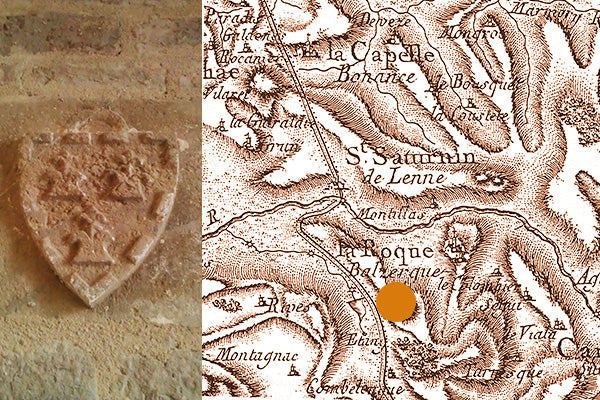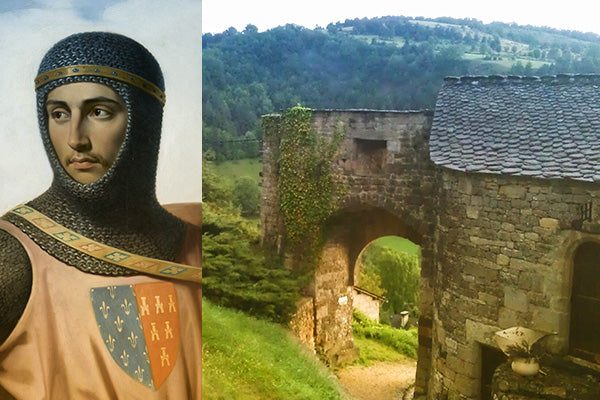WEB & WEBMARKETING AGENCY IN AVEYRON

The royal favor ceased when Jean V of Armagnac , suspected of felony, fell into disgrace . His property was seized .  A first time around 1443 for the benefit of the dolphin, future Louis XI, and again in 1470 to be cut up among the favorites of the moment. Charles d'Armagnac , brother of the Count and heir by right, knew for many years the dungeons of the Bastille, from which he was not to leave until 1483.
A first time around 1443 for the benefit of the dolphin, future Louis XI, and again in 1470 to be cut up among the favorites of the moment. Charles d'Armagnac , brother of the Count and heir by right, knew for many years the dungeons of the Bastille, from which he was not to leave until 1483.
When he was restored to his patrimonial rights, the aggrieved and united malcontents invested the castle of La Roque and subjected it to such a murderous fire that they preferred to buy the lifting of the siege against a large indemnity paid to the assailants.
The strongholds of the interior lost their importance as royal power grew stronger. They were therefore poorly maintained. It was moreover its prestige rather than its strength that enabled that of La Roque to play a deterrent role during the wars of religion. In 1620, we thought of restoring it, but we recoiled before the expense. In 1623 it was decided to dismantle it . This was, moreover, the policy of Richelieu , who feared that fortresses that were too badly defended might fall into the hands of a rebellious nobility fighting against the royal power. Following the dismantling of its castle, La Roque gained in peace…. but lost importance. The noble families of the neighborhood deserted the second homes they owned there. From 1660, the seat of the court was transferred to Saint-Saturnin . The revolution would bring the final blow by merging the community of La Roque into that of Saint Saturnin.
When the visitor takes the trouble to climb the rocky ridge which points some 200 meters further south, at a glance he grasps the importance of the Citadel of La Roque Valzèrgues . From the end of the 10th century when the castle became the property of the crown, until its voluntary dismantling at the beginning of the 15th century, it changed hands several times and suffered many damages. The last adjustments took place when the counts of Armagnac and Rodez fell into royal disgrace and the castle became the prerogative of the dauphin, the future Louis XI. A stone engraved with his arms, later inserted into the walls of the Romanesque church is proof of this. In the following century, the royal power neglected its upkeep, to the point that in 1622 a general restoration had entailed such costs that they preferred to consume the materials rather than offer a nest of resistance to possible slingers. The defenses of La Roque surrounded it with a double enclosure which was then called the " low fortress ". They also included the “ high fortress ”. Almost nothing remains of the exterior wall or faux-braye , except a ditch (or valat , in Occitan).
Behind the first wall, a platform allowed the garrison to move quickly towards the most threatened point and to regroup, facing the valley, on a wider terrace: the boulevard . On certain portions of its perimeter,  the bases of the inner enclosure were retained as retaining walls. It is not easy to find there the last vestiges of the round tower , known as the boulevard , nor of the large door, called today Pourtalas . The latter was then integrated into a set protected by a “ gabion ” and a drawbridge. It and also included a guardhouse today transformed into a mini-museum. Dominating the wall, gabions allowed a better concentration of fire. The Maison Neuve served both as the residence of the judge and as the seat of his court. The Maison de la Chapelle was probably the home of the castellans. In addition to these residences and the residences of the surrounding nobles, the enclosure was to house only the Captain's home, barracks, stables and stores. When the population was forced to retreat there, the church offered them temporary asylum. The top of La Roque was crowned with a square tower with three levels. The lowest, partially dug into the rock, was a cistern collecting rainwater brought from the upper floors through a system of basins and canals. Above was Madame's bedroom , with a fireplace and two windows. At the very top, a small room with walkway or violet .
the bases of the inner enclosure were retained as retaining walls. It is not easy to find there the last vestiges of the round tower , known as the boulevard , nor of the large door, called today Pourtalas . The latter was then integrated into a set protected by a “ gabion ” and a drawbridge. It and also included a guardhouse today transformed into a mini-museum. Dominating the wall, gabions allowed a better concentration of fire. The Maison Neuve served both as the residence of the judge and as the seat of his court. The Maison de la Chapelle was probably the home of the castellans. In addition to these residences and the residences of the surrounding nobles, the enclosure was to house only the Captain's home, barracks, stables and stores. When the population was forced to retreat there, the church offered them temporary asylum. The top of La Roque was crowned with a square tower with three levels. The lowest, partially dug into the rock, was a cistern collecting rainwater brought from the upper floors through a system of basins and canals. Above was Madame's bedroom , with a fireplace and two windows. At the very top, a small room with walkway or violet .
The reigning platform below was supported by a wall reinforced with two gabions . A drawbridge isolated it from the door. From the platform, a staircase carved out of the rock itself led to the entrance of the lower fortress , leading to a two-storey building on the way. A document from 1291, which the historian of Barrause echoes, reveals that thanks to the castle of La Roque the king intended to impose his authority and his justice. Into the cistern, a true dungeon (“ without day and without exit ”) were thrown those sentenced to death, while a dungeon near the tower was reserved for nobles and those who had not incurred the death penalty.
-Texts after " Safeguarding the Rouergue "-
find out more about La Roque Valzergues and its region:
Town Hall of Saint Saturnin de Lenne
Tourist Office of the Causses in Aubrac
Community of Communes of the Causses in Aubrac
Comments are approved before publication.